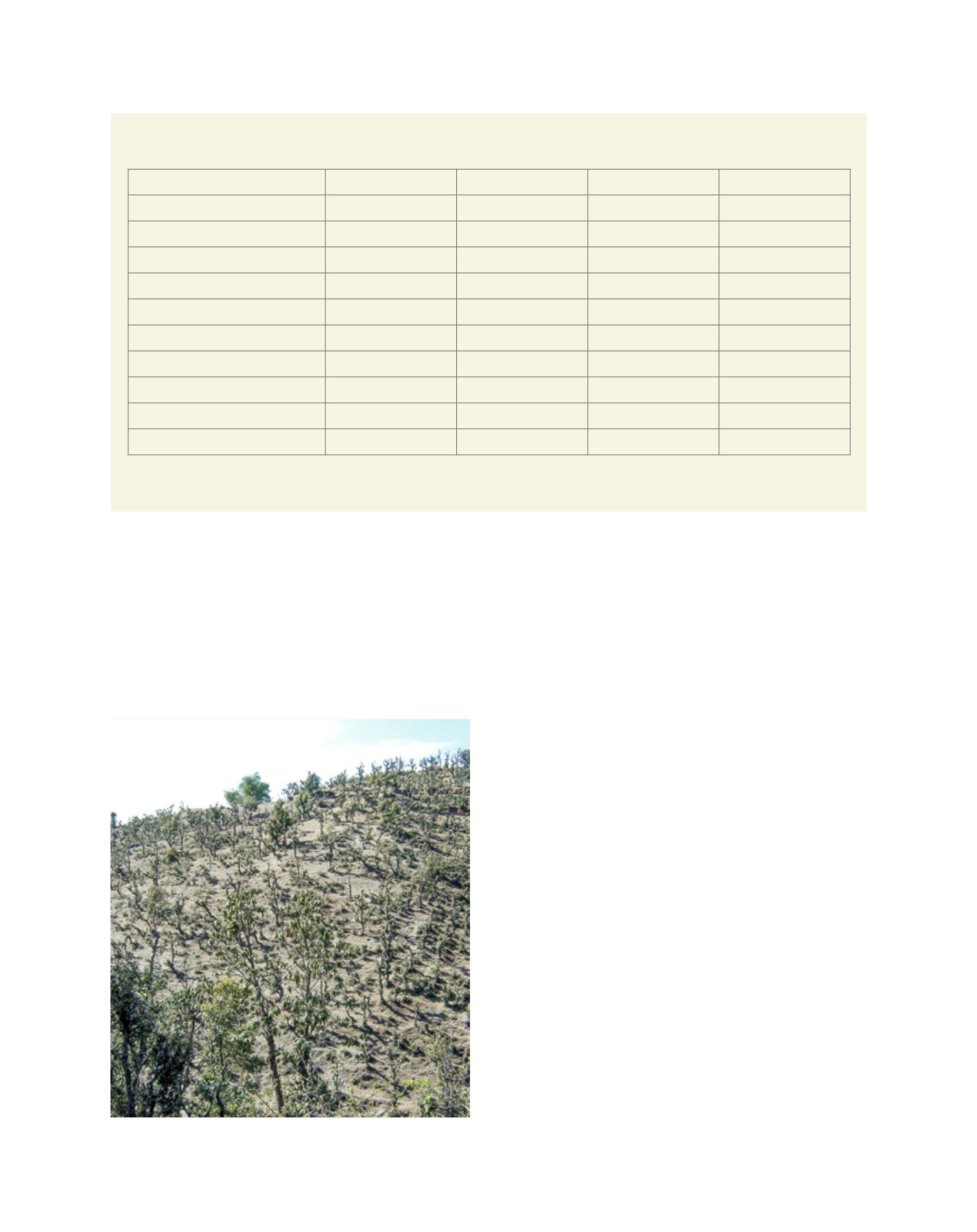

[
] 161
collar diameter). In Arah village in Garur Ganga watershed
(Uttarakhand), after treatment of 9 hectares of degraded
land the soil fertility, ground grass cover and plant canopy
improved and soil loss was reduced by 60 per cent after
12 years. Fodder production increased from 2.7 tons per
year (Rs4,050) in 1993 to 16.4 tons per year (Rs75,020) in
2006, thus gradually reducing the women’s workload and
improving income from the degraded land.
Rehabilitation of pasture/non-arable land:
This category
of land, suffering from high grazing pressure, soil erosion
and gully formation and the invasion of non-palatable
grass/weeds, was treated with a silvi-pasture development
approach by planting fodder trees and grass of high fodder
value and placing a ban on grazing. A nursery of suitable
plants was raised using healthy seed/root stock from the
nearby areas. This model followed five community grazing
lands across IHR (area 60 hectares). Improvements were
achieved in fodder productivity (from 0.5 to 4 t/ha
-1
/yr
-1
)
and soil fertility (soil carbon increased from 0.44 per cent
to 0.96 per cent), organic matter (from 0.75 per cent to
1.66 per cent) and soil moisture (from 13.2 per cent to
20 per cent). In a fodder bank development method on
6 hectares of degraded grazing land in Maikhanda village
(Rudraprayag district, Uttarakhand) a combination of
MPTs, indigenous and exotic fodder grasses were planted
with the participation of women’s groups. Improved fodder
quality and an eightfold increase in fodder yield not only
saved about a week in terms of the time needed to collect
fodder from forests, but also improved the milk yield of the
animals from 0.5 litres to 1.5 litres per day due to feeding
nutritive grasses, particularly Napier.
4
Rehabilitation of abandoned agricultural land:
In this cate-
gory of land, abandoned due to low soil fertility and crop
yield, an agroforestry model was developed. Selection of
MPTs for plantation was based on agroforestry traits such as
straight bole, deep roots and a low canopy shade, so that the
food crops grown underneath (local cereals and vegetables)
do not face much competition for sunlight, soil moisture
and soil nutrients. This approach was demonstrated in 6
hectares of abandoned agricultural land at Bansbara village
in Garhwal Himalaya where, after 20 years, height growth
(5-17 metres per tree), biomass (20-160 t/ha), C sequestra-
Important MPTs suitable for wasteland plantation in the Central Himalayan region
Source: Negi & Dhyani, 2014
7
Species
Main use
Minor use
Crude protein (%)
Season of major use
Bauhinia variegata (D)
FD, FR
AG, F
18.1
Winter
Celtis australis (D)
FD, FR
AG
8.2
Summer
Grewia optiva (D)
FD, FR
F
26.1
Winter
Melia azedarach (D)
MT, FR
FD
18.4
Rainy
Prunus cerasoides (D)
SC, S
FR, FD
19.2
Year-round
Quercus leucotrichophora (E)
FD, FR, SC
AG
18.1
Year-round
Albizia stipulata (D)
FR
FD
15.0
Summer
Alnus nepalensis (D)
SC
FR, FD
12.6
Year-round
Dalbergia sissoo (D)
T
FD
9.1
Summer
Ougeinia dalbergioides (D)
FD, AG
MT, M
18.2
Summer
FD= fodder, FR = firewood, MT = minor timber, SC = soil and water conservation, S = sacred, T = timber, AG = agricultural implements, F = fibre, M = medicine, D= deciduous, E= evergreen
Image: GBPIHED
Oak forest converted to open scrub due to lopping for fodder and fuelwood
L
iving
L
and
















